Hogwarts Legacy is far from alone: there are now over 25 Harry Potter games. We remember with you the best – and the worst.
You can”t even say “Harry Potter” without a lot of weight resonating with it. An entire generation has grown up with the adventures of the Sorcerer”s Apprentice and his friends, across various forms of media. No wonder there are a bunch of video games among them.
There are so many of them that it is absolutely conceivable that some fans also first came into contact with the series through them. So lucky, because at least in the beginning the adaptations are actually staged with a love of detail. Here it is no wonder that one falls in love with the magical world. But the darker the books and films become over the years, the more uncharitable the corresponding adaptations become.
We”ve researched our way through the mountain of past Harry Potter games and, just in time for the launch of Hogwarts Legacy, we”re taking a look back at the years of wizarding life with you.
The Great Gaming Deluge
Basically, Harry Potter games can be divided into two categories: On the one hand, there are the direct adaptations to the movies, and on the other hand, spin-offs that interpret the franchise more freely. But if we count only the former, we come up with 25 different games.
Wait a minute … 25?!? There are only eight films? Well, Warner Bros. and Electronic Arts wanted to get the absolute maximum out of the licence and commissioned a whole series of different development studios for each film to cater for all consoles, handhelds and the PC. Oh, and smartphones too.
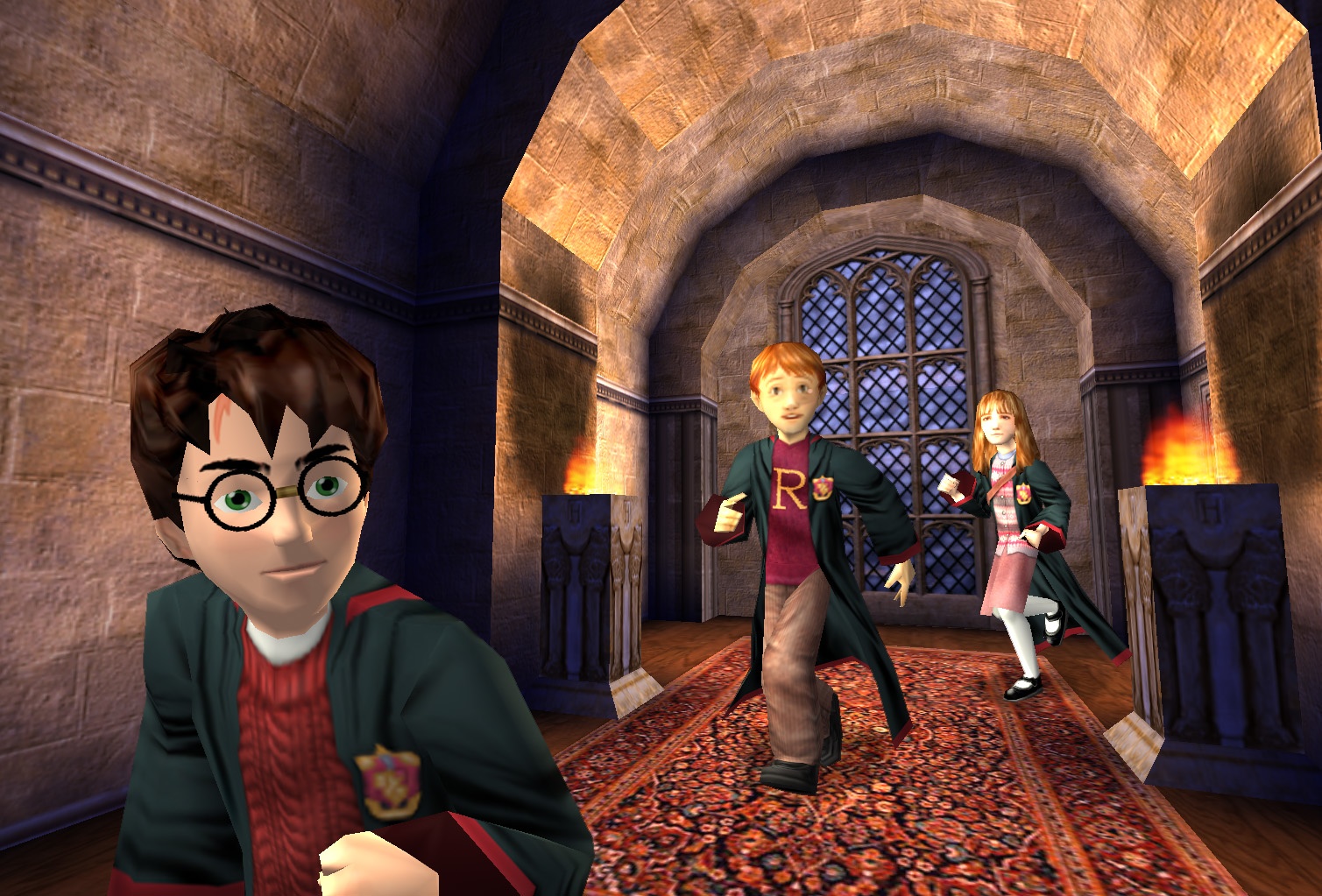
Of course, the platforms differ massively in some cases. After all, the Game Boy Color cannot technically keep up with the PlayStation 2, and Java games on the smartphone limp along behind anyway. Although the source material is identical for all the conversions, they interpret it technically and artistically in different ways. Even the genres change.
This is already evident in Harry Potter and the Philosopher”s Stone: on the original PlayStation, you complete an action adventure, while the Game Boy colour version plays like a JRPG, including turn-based battles. So if you love the Harry Potter franchise, you”ll have plenty to do with the many interpretations.
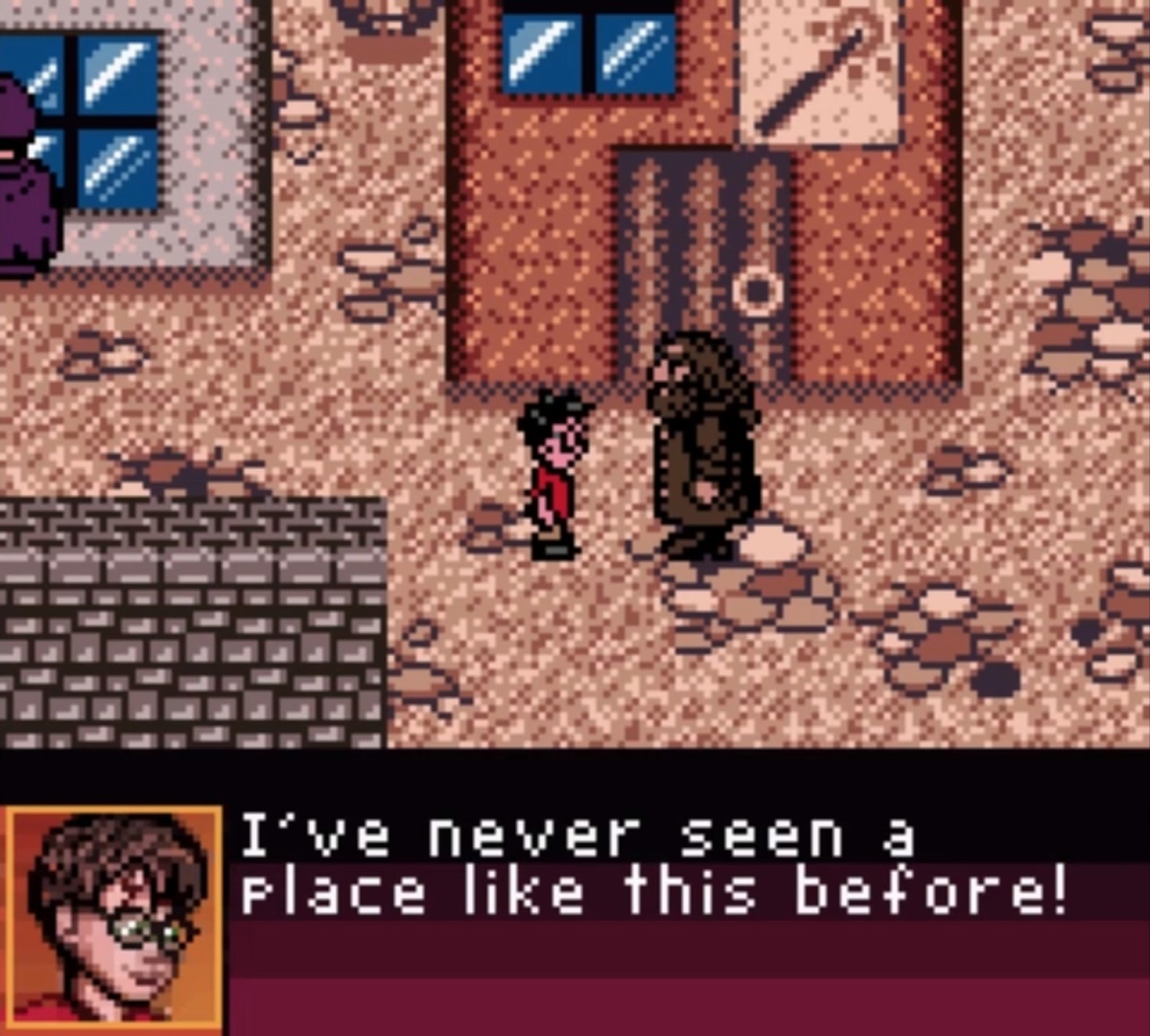
In the beginning was wonder
Well, do you want to feel really old? Harry Potter and the Philosopher”s Stone was released on 14 November 2001. Insane, isn”t it? And at that time, the book was even older. Maybe you remember how school teachers publicly voiced their concerns about children reading about alchemy in the novels.
At least that took their minds off the old chestnut that games were harmful, otherwise this classic would have got it too. Yes, classic, because the first game for PSone is really good! In the action adventure, you accompany Harry as he explores Hogwarts, plays Quidditch, casts spells and fights Voldemort. What sounds like everyday life was relatively new for both our protagonist and the audience.
The game manages to make you feel as if you are experiencing everything with shining children”s eyes. This is helped by the accurate representation of the characters and settings from the books. What is interesting here is that the developers relied more on their own imagination, as the films were still in the making. This is why, for example, the characters look like childish cartoon figures that are more reminiscent of the illustrations on the book covers. Even the music is not from the film, but was composed especially for the game.
This continues with Harry Potter and the Chamber of Secrets (2002), which is released just one year later. Since we are talking about Electronic Arts here, the inevitable FIFA comparison comes up: In order to serve so many different platforms, but at the same time be able to bring new games to retailer shelves in a short development time, compromises have to be made.
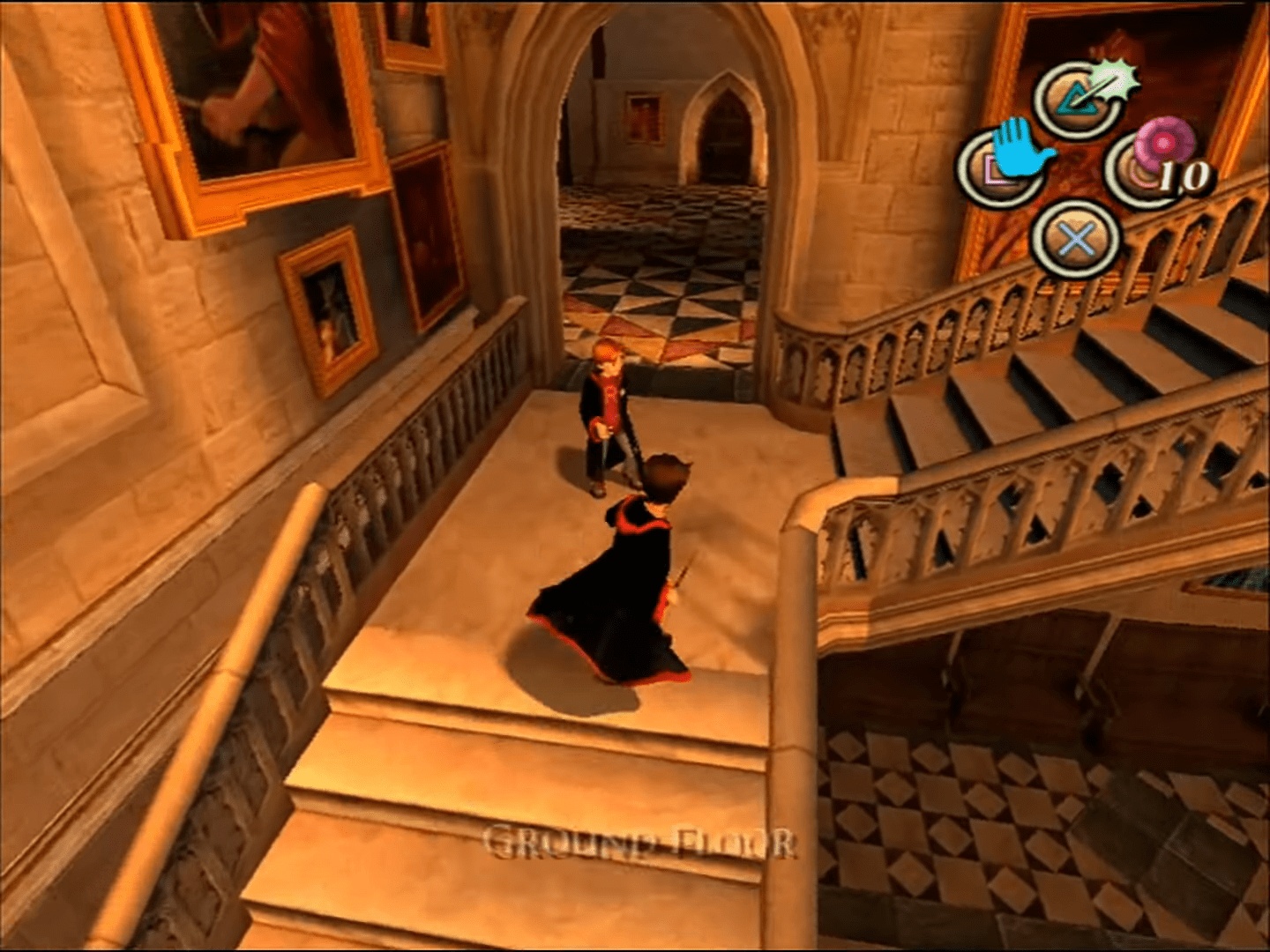
And oh boy, were there compromises here! Almost all versions play like an expansion pack of the first game, in which many game elements and sequences are fundamentally repetitive. For example, there are many chase scenes with a self-running camera, parts of which use an identical level design as in the predecessor.
The jump to PS2 and co.
The next-gen versions of the time are spared this fate, as a standalone version is released for PlayStation 2, Xbox and GameCube that is better in all respects and strongly reminiscent of Zelda. Not only can you explore Hogwarts more freely, but there are also several puzzle-heavy dungeons to solve. Among fans, this version is therefore often called one of the very best Harry Potter games, because despite all the improvements, it also retains the sense of wonder of the first game.
This must also have been noticed internally at the time: In a very EA-typical manner, they published a new interpretation of the Philosopher”s Stone for PS2, Xbox and GC in 2003, which was based on it to a good two thirds. That means: the same assets, the same gameplay elements, just a few new dialogues and tasks. Well, do you understand how we come to FIFA? EA already understood how to generate a lot of money with little effort.
It is therefore unsurprising that Harry Potter and the Prisoner of Azkaban (2004) is also built on the same framework. However, it feels like a new game again, because not only have many new sections been added, but also a co-op mechanic at last. Here, at the touch of a button, you switch between Harry, Hermione and Ron.
This is necessary because they bring their own abilities and sometimes only a certain character can pass an obstacle. Likewise, the three of them have to carry heavy objects together. And yes: of course the three of them also have to fight. While the trio has been present in the previous games, the sense of teamwork is stronger here because you control each character.
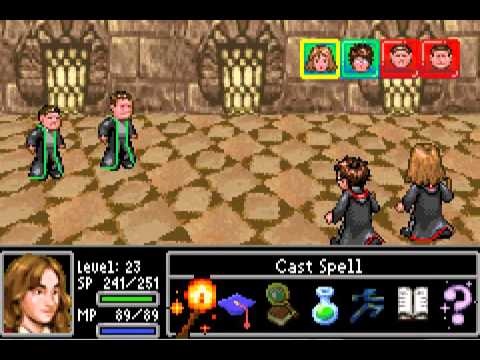
Unfortunately, there is no local co-op mode, but that would probably only complicate the numerous side tasks. Here, for example, you can fly on Buckbeak, and with two other players, the argument about the controls would have been big.
Particularly noteworthy here is the GBA version, for which the same studio was commissioned that was already responsible for the JRPG versions on the Game Boy Color. It also presents itself as a good role-playing game, only with considerably more effort. The detailed pixel graphics pushed the GBA quite a bit to its limits back then and shines with some beautiful animations. The turn-based battles are also more dynamically staged. This version is an absolute insider tip if you”re into retro games!
A break in quality
Although Electronic Arts has recycled a lot of content for new releases, it”s fair to say: the First Three Years of School games have their own charm and stand out enough from the film and book to pass as a standalone experience. One thing all the games have in common is that they had to somehow fill the less action-packed scenes in the originals with content.
Sometimes this was done with rather annoying mini-games, but sometimes with really bizarre ideas. For example, in one scene you have to pick up Ron”s vomit after he”s been put under a Slugulus-Eructo curse. Yes. That”s right. There are also sections where you fly around with a broom or play quiddich matches. For fans of the sport, there was even a separate spin-off in 2003 entitled Harry Potter: Quidditch World Cup. Quasi the Potter-FIFA, somehow unavoidable at EA.
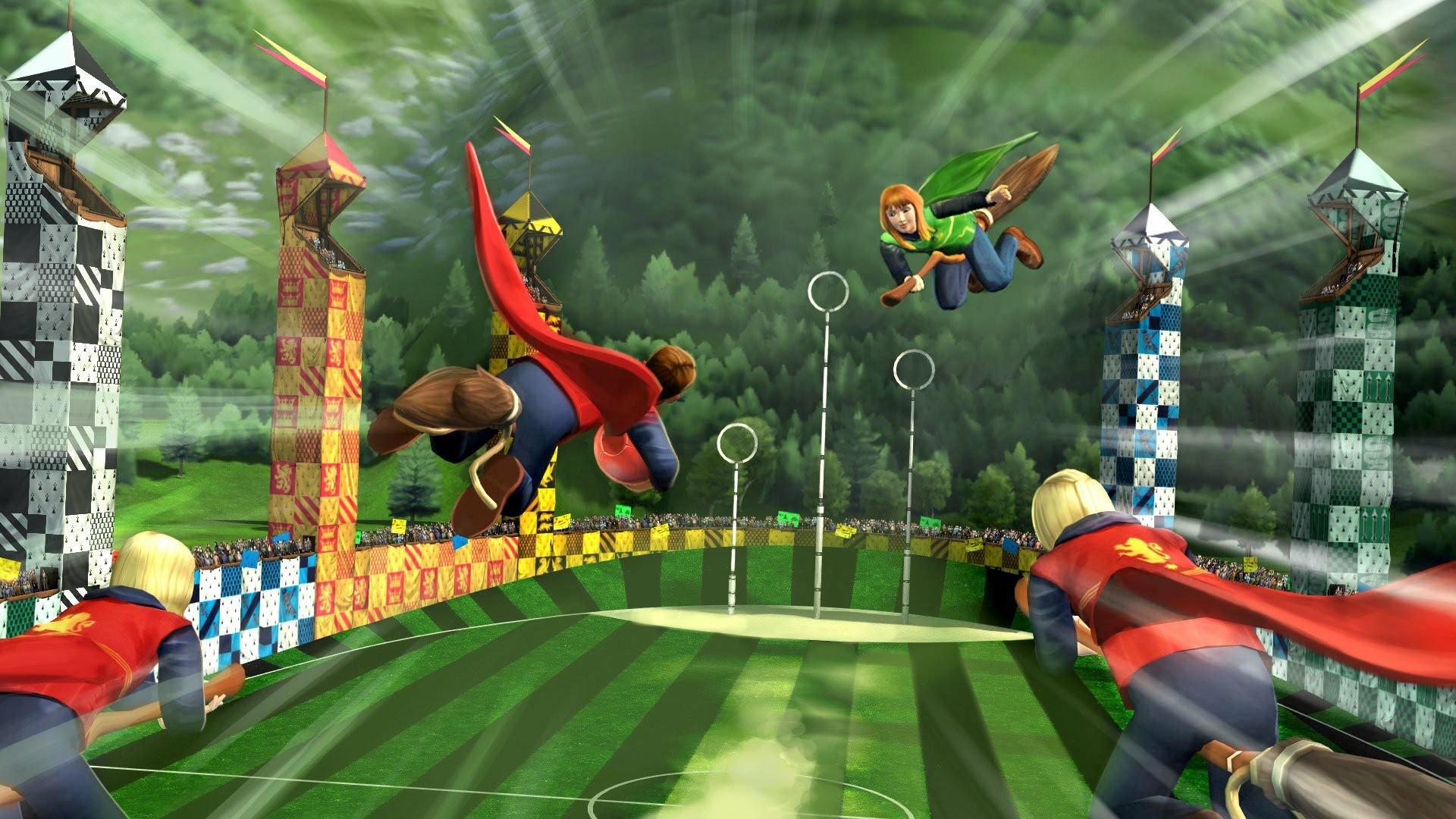
As inevitable as the drop in quality in longer game series, it seems. Harry Potter and the Goblet of Fire (2005) throws all the virtues of its predecessors overboard and serves up a pure co-op action game that is most reminiscent of arcade brawlers – only without the brawling. Instead, as expected, you defend yourself with spells while moving through strictly linear levels whose environments hardly offer any variety.
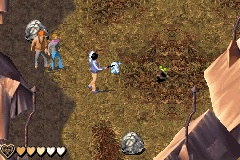
The exploration of Hogwarts has disappeared. Instead, you push obstacles like boulders aside with your wand. Or trees. Or jars. Exciting. You can share the misery with two other players in local co-op, but they are then relegated to watching during some of the intermediate tasks. As in the original, Harry has to master tasks of a tournament, for example (alone) diving or (alone) flying through a labyrinth.
Apropos: He also flies (alone) on his broom in a few of the rail-shooter sequences. You can already tell: the fourth realisation is a low point, and not even charm can save it, because it simply has none: The cartoon interpretations of the magical world have given way to photorealistic models of the main characters, who now look like the actors in the film. Well, not really, because what was a plus back then has not aged well from a technical point of view today. The stylised prequels are more likely to be enjoyed today.

Return to the Adventure
Harry Potter and the Order of the Phoenix (2007) follows Harry”s fifth year at school, where he has to deal with the brewing war between Lord Voldemort”s followers and Dumbledore”s Order of the Phoenix. Since all the nonsense surrounding the Goblet of Fire did not go down well with fans, they have apparently taken the criticism to heart and brought back free exploration of Hogwarts this time around.
Okay, that”s an understatement. This game is exploration at its purest. The physics-based action interludes that make heavy use of the analogue stick are reduced. Instead, you talk to other students a lot here and do endless fetch quests. You don”t notice this at first, because the recreation of the magic school is really detailed and thus successful. The style has become even a bit more photo-realistic, but that only makes the proximity to the film sets even stronger.
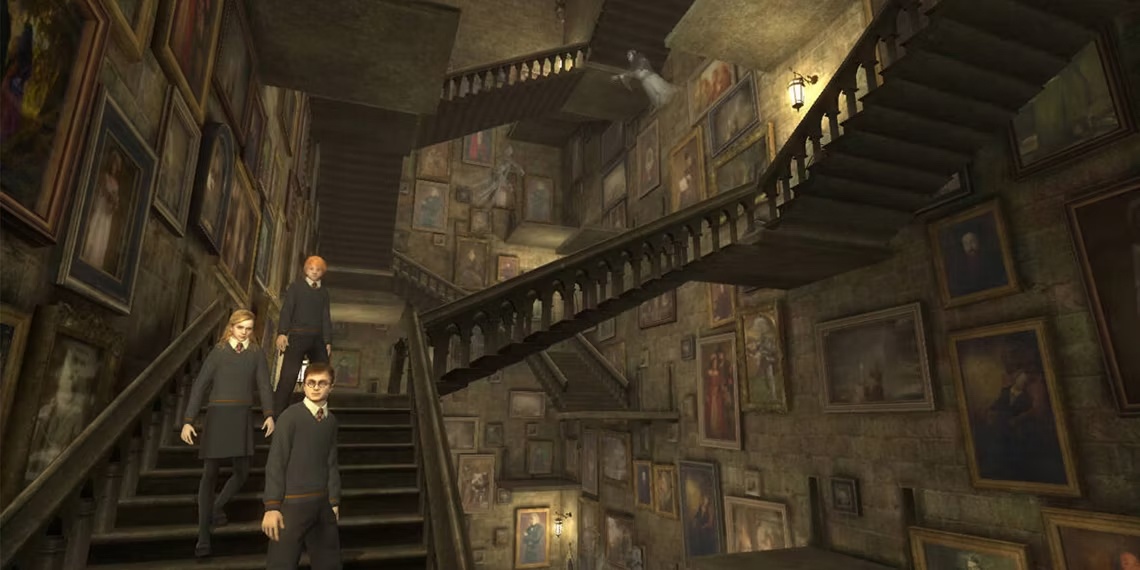
Without spoiling: Do you remember that Harry has to recruit companions in the original? That also happens in the game, but before they finally join you, you always have to complete a boring mini-game. For example, arranging objects correctly while a strange physics engine stands in your way. Or running errands while you plod through the school at snoring speed. At some point, the recreation of Hogwarts no longer impresses and you wonder if the lack of a fast travel function might even be used as a torture method during interrogations.
Harry Potter and the Half-Blood Prince (2009) basically adopts the same concept, but adds meaningful improvements and new gameplay elements to it. Quick travel function? Check! Harry can now run? Check! The number of fetch quests is now reduced, and there”s even a new mini-game where you have to concoct potions yourself.
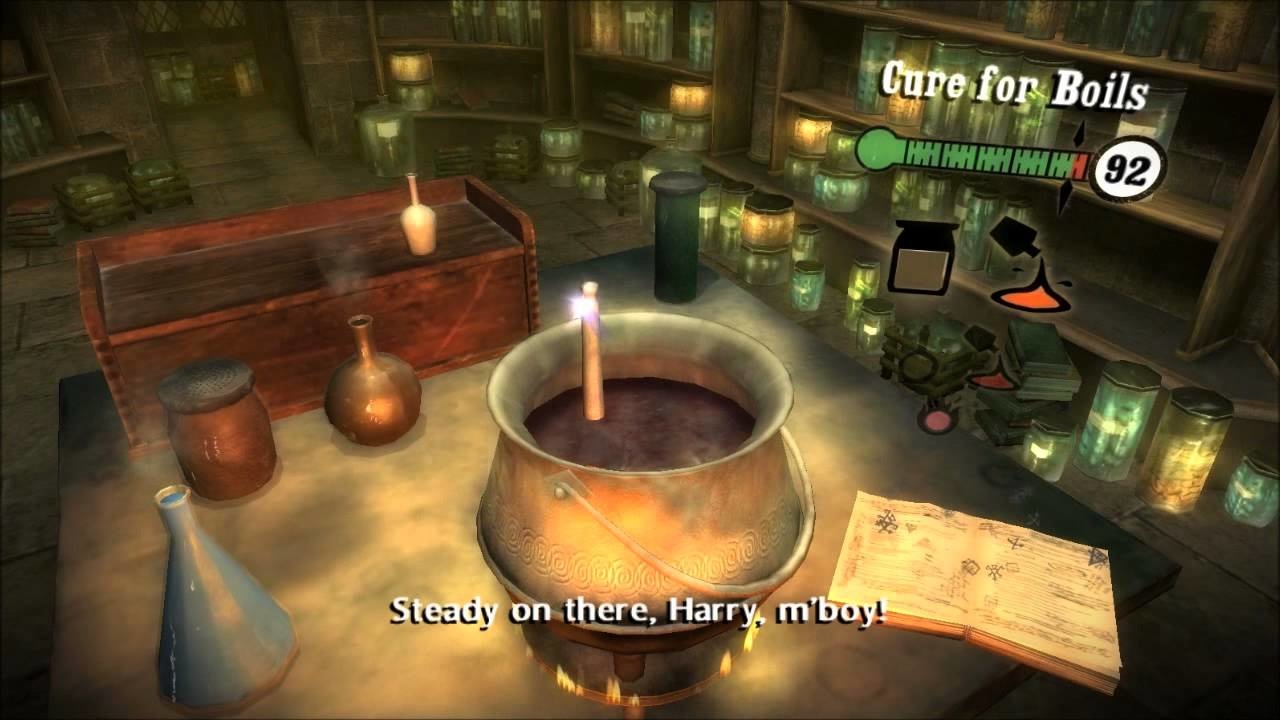
You get the feeling that this is the game that Order of the Phoenix should have become. And yes, it”s still thoroughly recommendable on balance, even if it no longer captures the magic of the very first games. To date, there is no better game that depicts something like everyday life at Hogwarts.

Harry goes crazy!
You won”t find him in the next two games to the final films: Harry Potter and the Deathly Hallows – Part 1 and Part 2 are 3rd-person shooters in the style of a Gears of War. Only with spells. Remember those teachers who complained about the books because of their proximity to alchemy? They should see these two games now! Harry blasts whole hordes of Death Eaters with his wand. Each spell works like the equivalent of one of the usual handguns you know from other games.
One spell has the effect of a shotgun, another looks like a sniper rifle. Oh yes, that”s very strange and stupid, but for that very reason it”s not without its charm. Unfortunately, Part 1 doesn”t make much of it. The game fills up the numerous quiet scenes from the film, in which the trio is on the run and camping, with boring side missions that send you through the same old levels.
In between, there are snoozy stealth missions with the stealth cloak from the first-person perspective, in which your enemies take overly obvious running paths. Part 2 is already better: sneaking passages are omitted here, there is now a teleportation move for dodging, the cover system works better, and the shots also have more punch. The missions are more varied and you even take on the role of Minerva McGonagall from time to time. Part 2 doesn”t stand up to comparison with the previous games either, but at least it offers nice baller action to finish off.
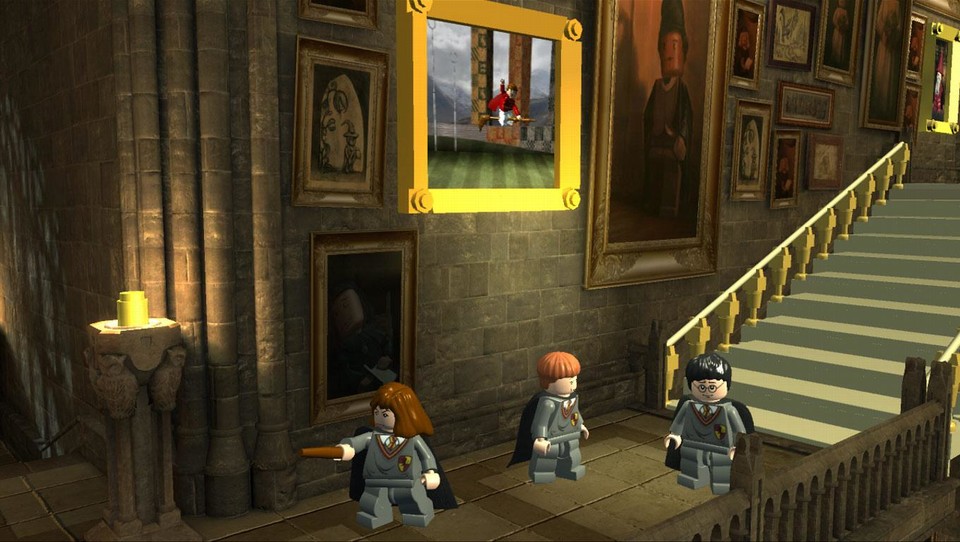
The spin-offs
In this article we have mainly focused on the film adaptations, but as you can read in the release list, there are still a number of spin-offs. The most noteworthy here are certainly the Lego interpretations of Traveller”s Tales. The series was split into two parts: Lego Harry Potter: Years 1-4 was released in 2010, followed by Lego Harry Potter: Years 5-7 in 2011. Typical of Lego games, these are parodies of the films that can be played in local multiplayer. This is quite lovingly realised and has its charm, especially as back then the concept of Lego versions was not as hackneyed as it is today.
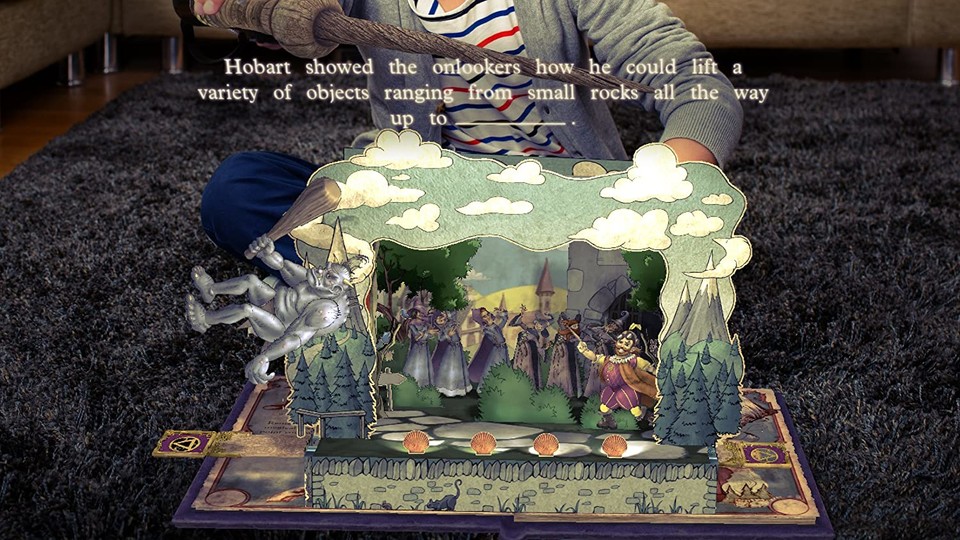
Very unique and therefore interesting are the two Wonderbook titles: Book of Spells and Book of Potions were developed in 2012 and 2013. These are augmented reality games for PlayStation 3, for which you need the camera, a Move controller and the aforementioned Wonderbook. Here, you use hand movements to cast spells, which then come out of the book in a nicely animated way on the screen, while a narrative voice provides a sorcerer”s apprentice flair. Both AR games are designed more for very young players, but the concept is so cool that it also amazed adults. Back then, AR also somehow still seemed reasonably magical.
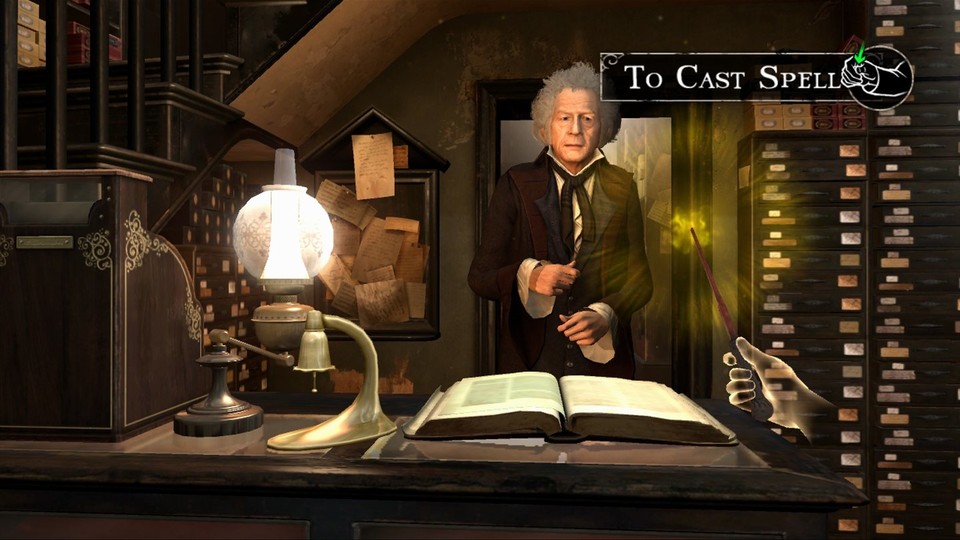
Most would probably also describe Pokémon Go as magical, a sensational success that brought whole generations of players out into the fresh air. Developer Niantic announced a spiritual successor in 2019 with Harry Potter: Wizards Unite. While it”s cool to cast spells in an augmented reality game on your smartphone, the spark doesn”t quite come across. The collecting aspect of Pokémon Go is more accessible.
So many games, so little time …
Are you surprised that there are so many Harry Potter games? We are, even though there are similarly extensive ludographies for other big franchises like Star Wars or Star Trek. Above all, the coverage of really all available system platforms is quite expansive. Sure, Ubisoft took a similar approach back in the day, releasing several versions of James Cameron”s Avatar simultaneously, for example (which irritatingly all have the same cover), but Harry Potter is still the undisputed world champion in this aspect.
Even if the quality of the games varies, however, many tastes should be catered for here. From sports game to RPG to shooter to open-world adventure: pretty much everything is there. Except for the obligatory kart racing. Seriously! Where is the Harry Potter Racer? That shouldn”t really be missing from any big series. So we eagerly await the announcement of “Magical Race Tracks and How to Drift Them”.
